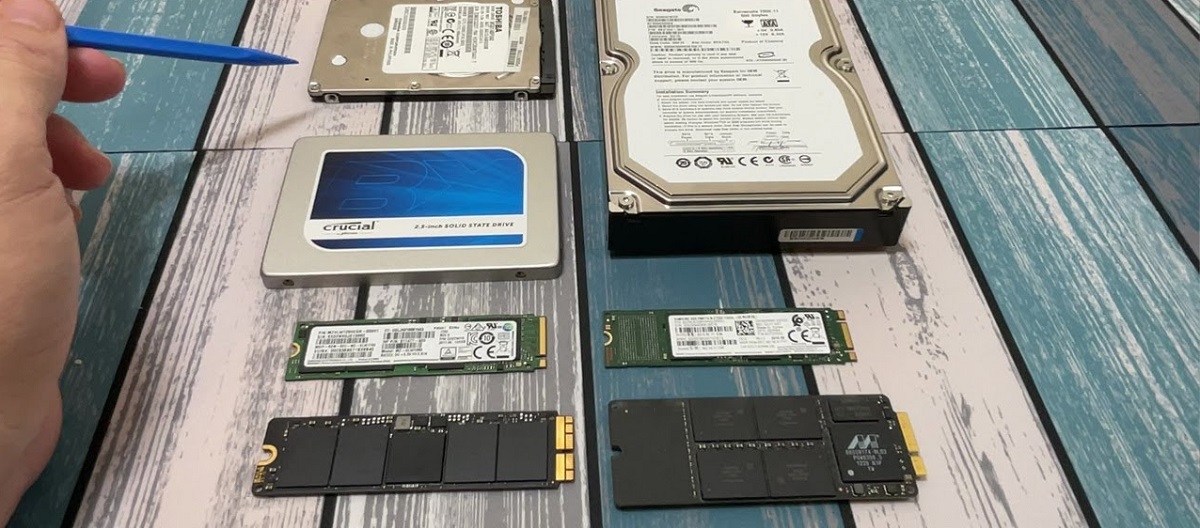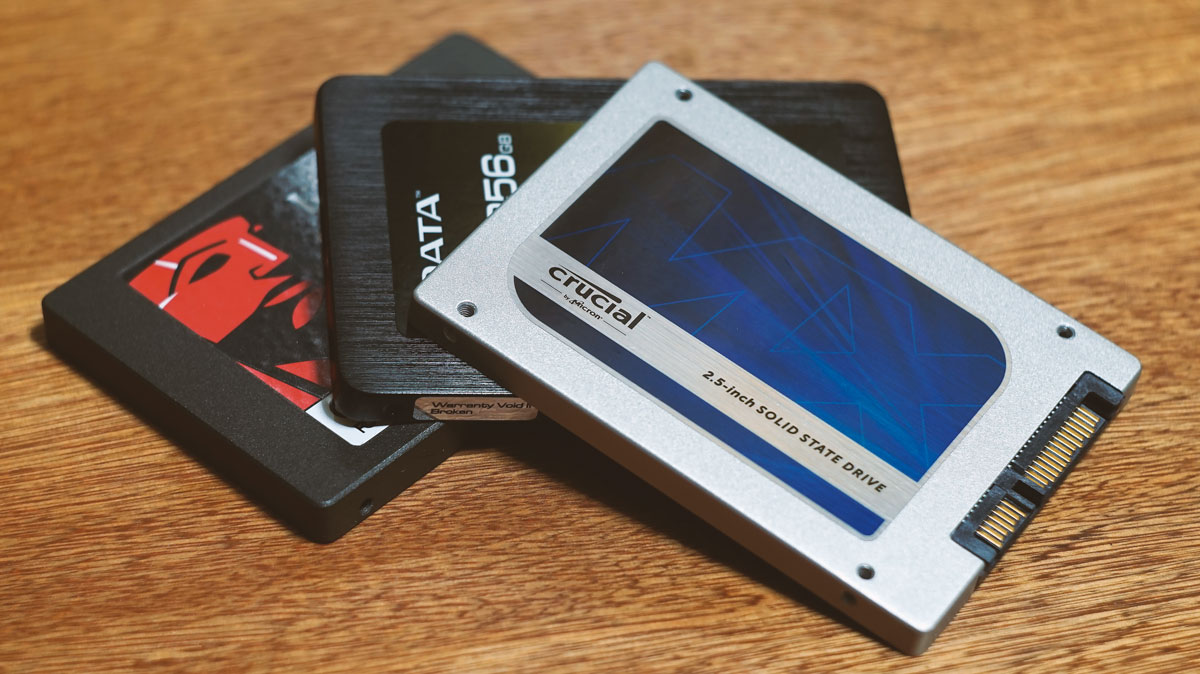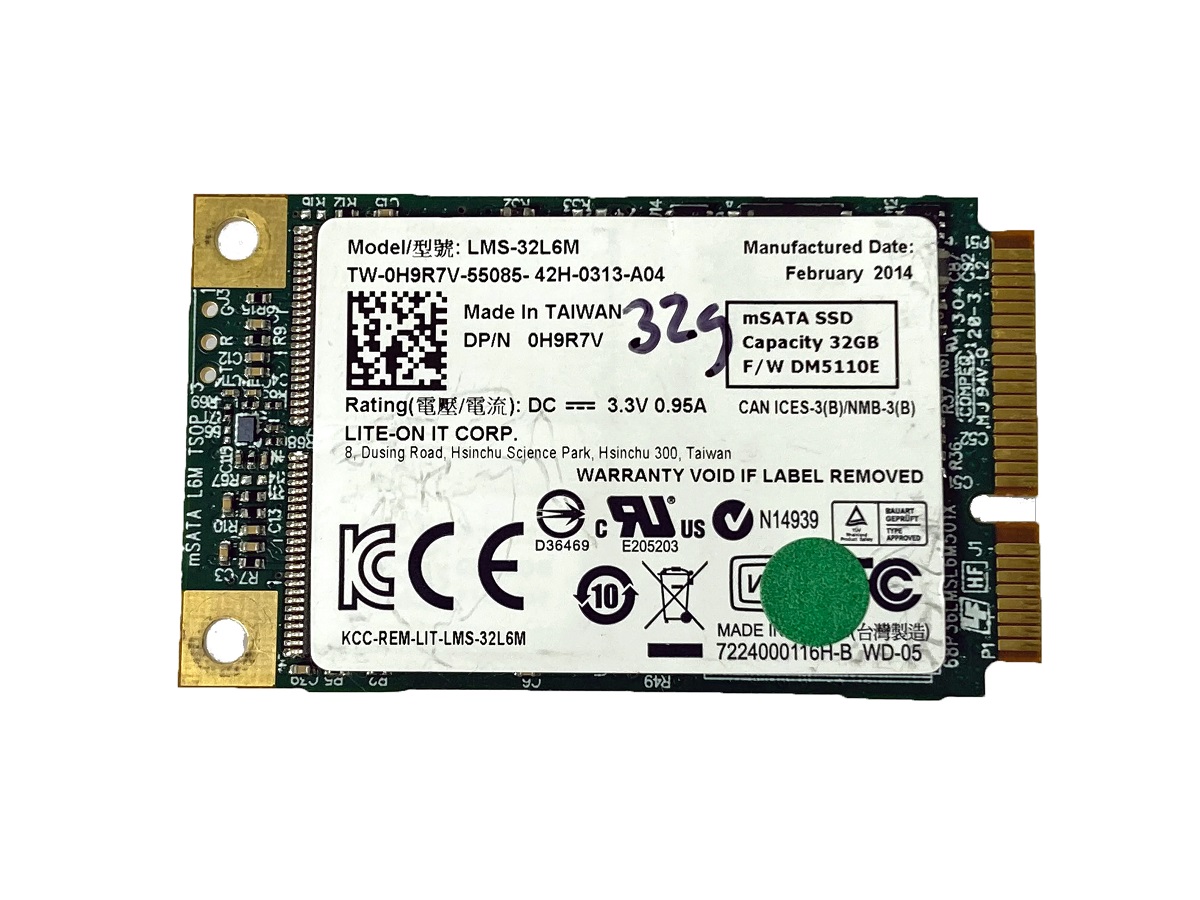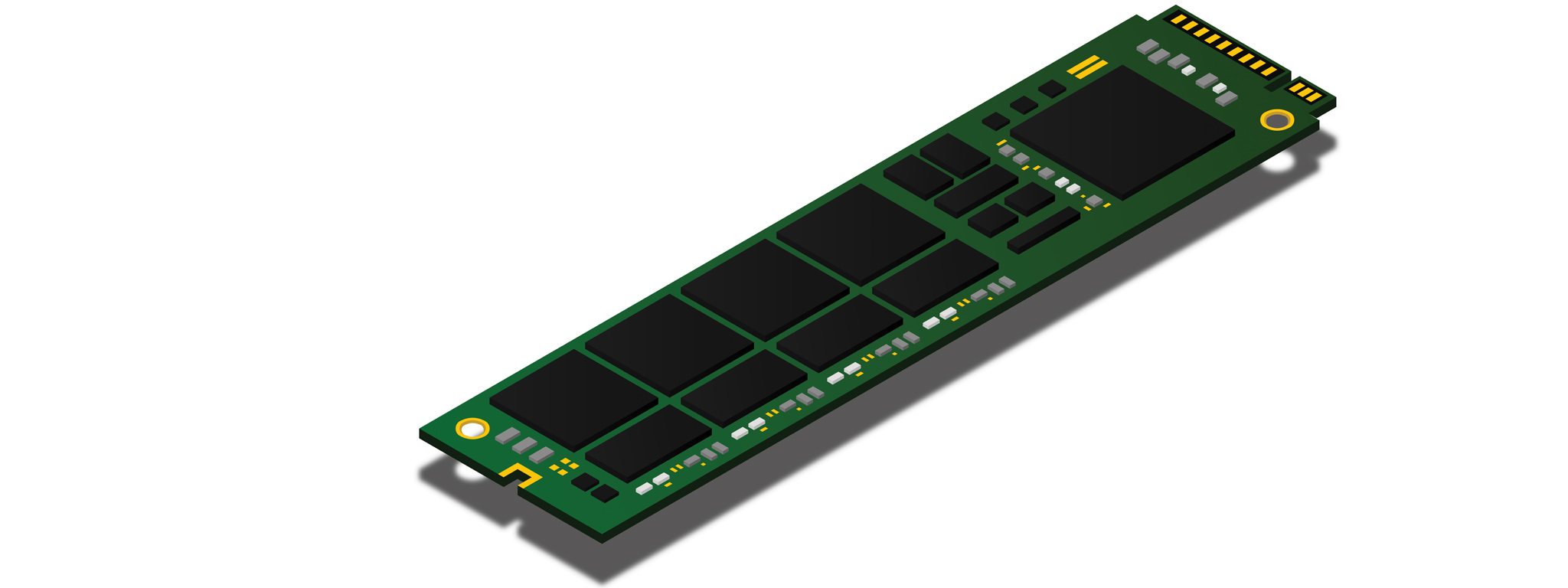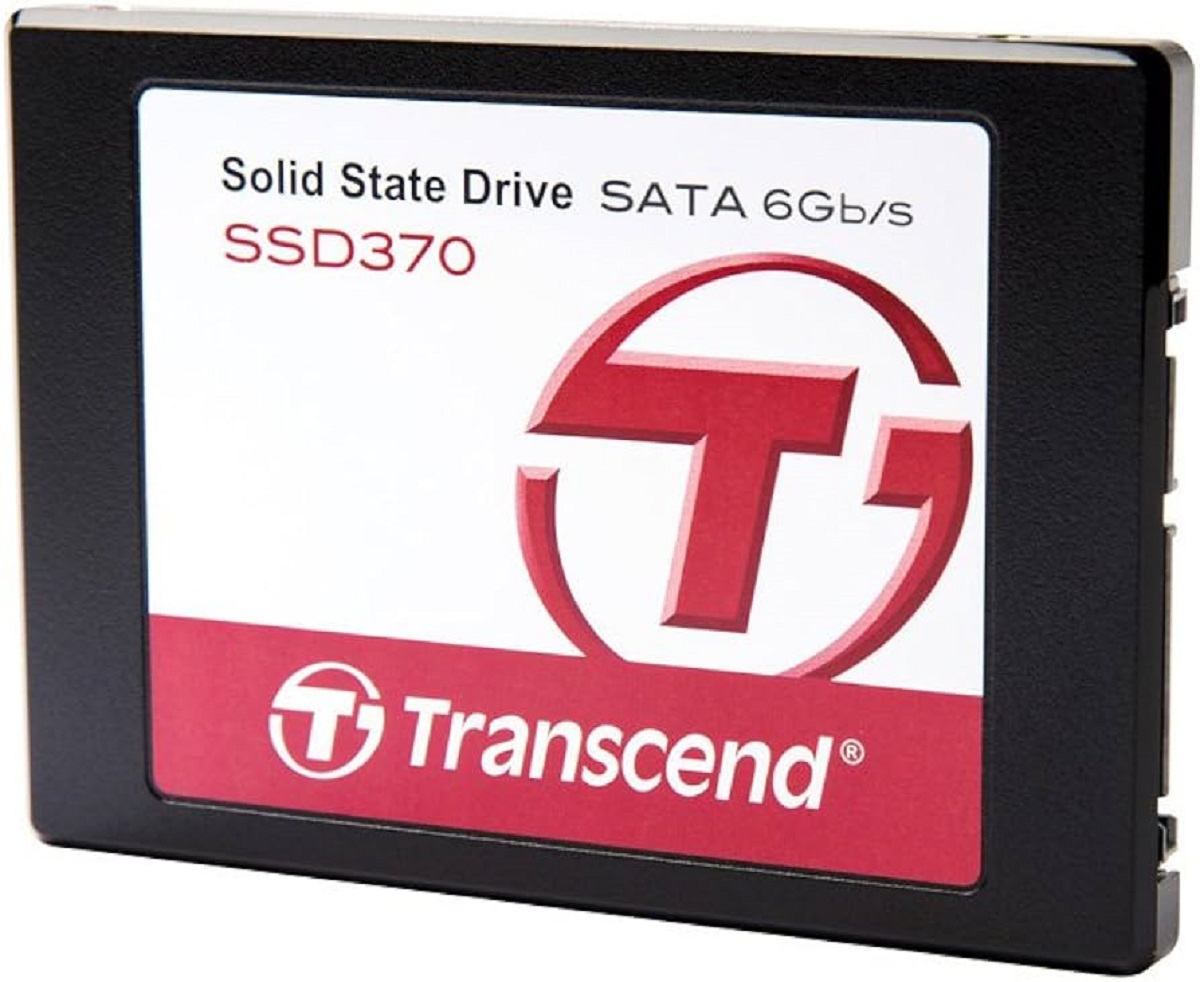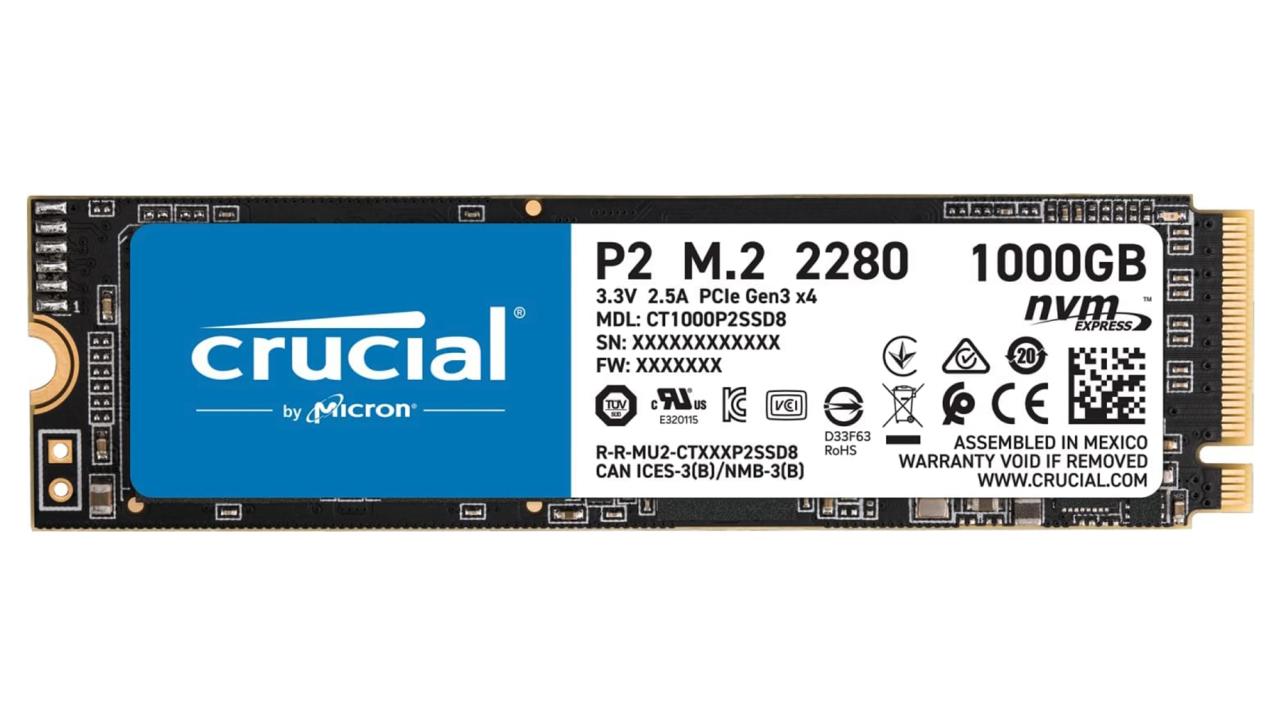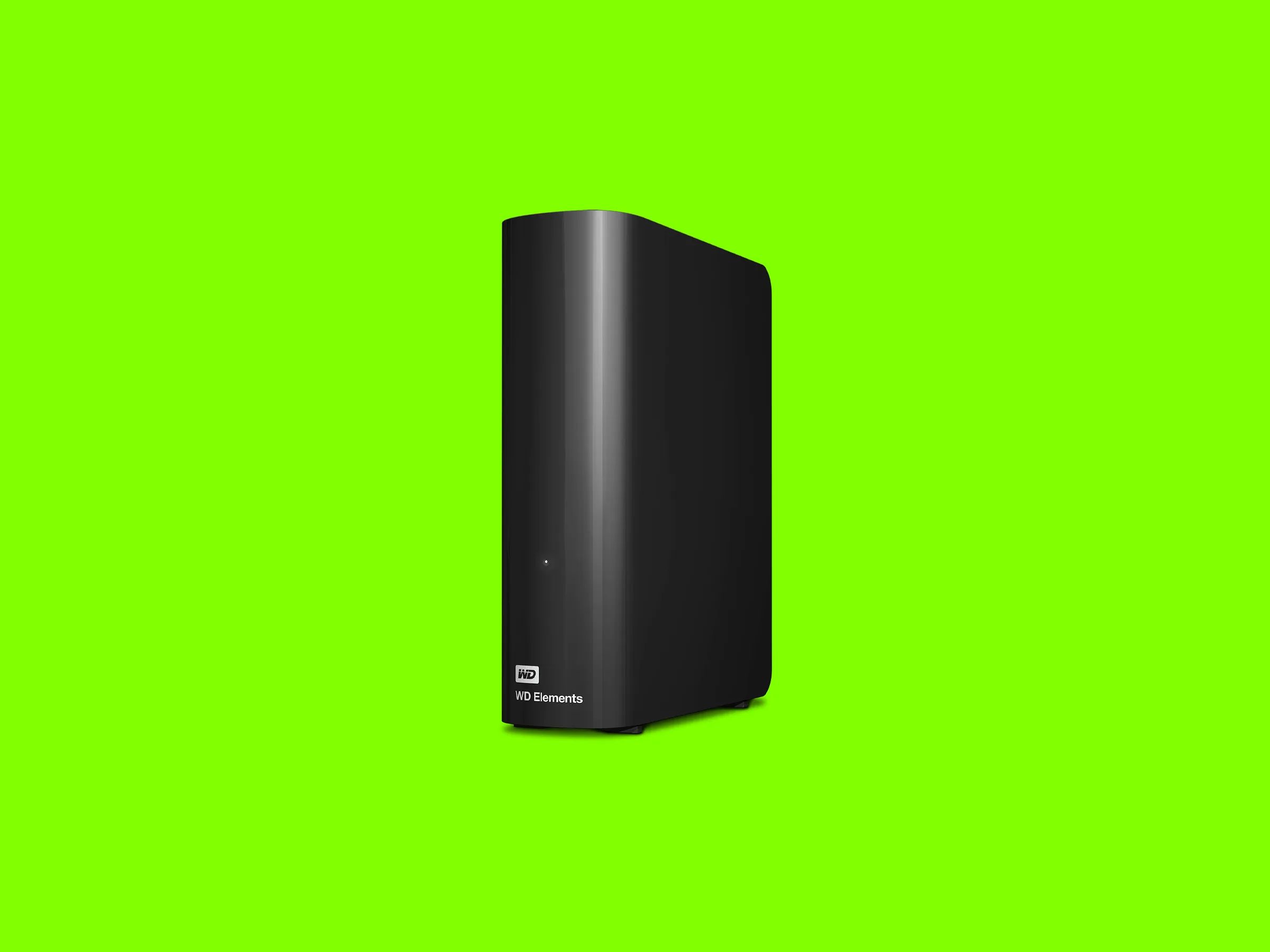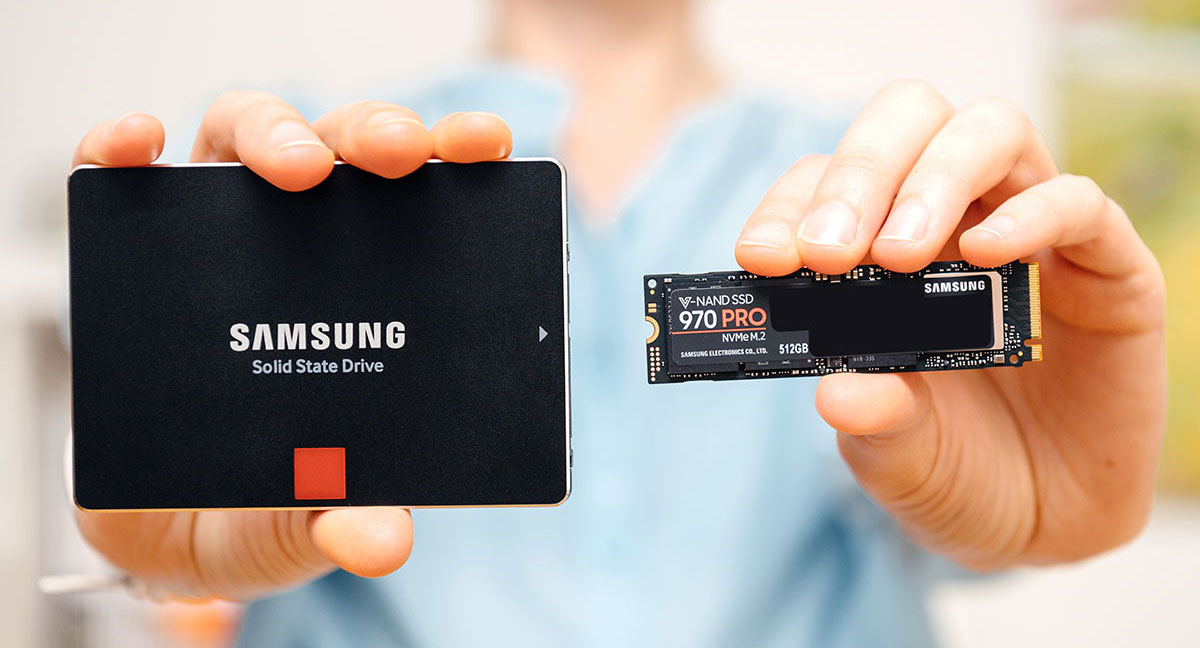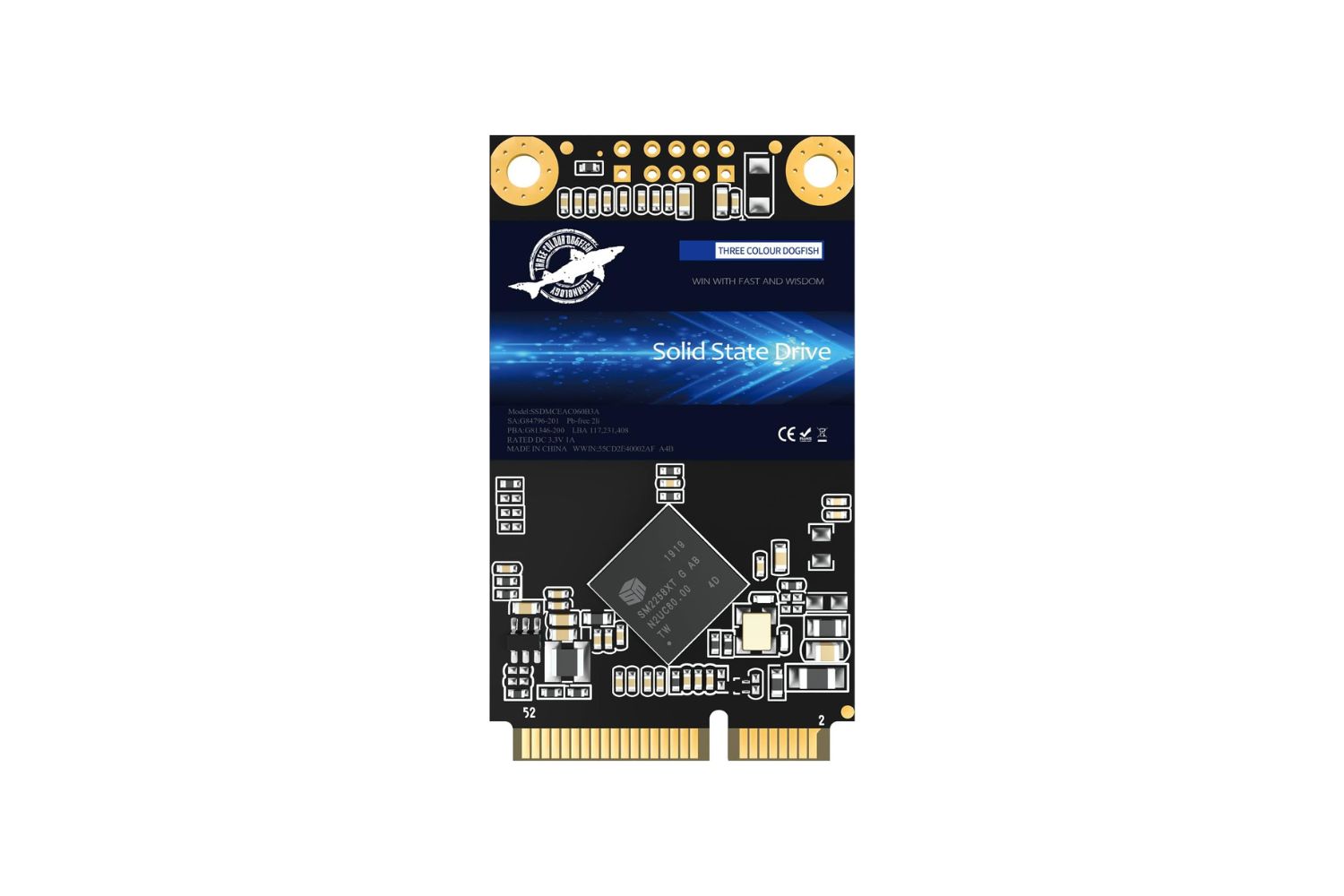Introduction
Welcome to the world of data storage! In today’s rapidly advancing technological landscape, the choice of storage drives can make a significant difference in performance and user experience. Two popular options that often come up in discussions are Solid State Drives (SSDs) and SATA drives. While both serve the purpose of storing data, there are some key differences between them.
In this article, we will explore the contrasting features of SSDs and SATA drives to help you understand which option might be best suited for your needs. We will delve into factors like performance, speed, reliability, power consumption, cost, and compatibility, enabling you to make an informed decision when it comes to selecting the right storage drive for your personal or professional use.
Before we dive into the details, let’s understand the fundamental differences between Solid State Drives and SATA drives. Solid State Drives, as the name suggests, utilize solid-state memory chips to store and retrieve data, whereas SATA drives, which stands for Serial Advanced Technology Attachment, employ spinning magnetic disks to perform the same function.
Now that we have a basic understanding of the two types of drives, let’s proceed with a comprehensive analysis of their individual characteristics. By the end of this article, you will have a clear understanding of the pros and cons associated with SSDs and SATA drives, enabling you to make an informed decision based on your specific requirements.
Overview of Solid State Drives
Solid State Drives (SSDs) have gained immense popularity in recent years due to their impressive performance and reliability. Unlike traditional hard disk drives (HDDs) that utilize spinning disks and mechanical read/write heads, SSDs are based on flash memory technology. This means that data is stored on interconnected flash memory chips, resulting in faster access times and higher overall performance.
One of the key advantages of SSDs is their incredible speed. Unlike HDDs, which rely on mechanical movement to access data, SSDs can retrieve information almost instantaneously. This translates into shorter boot times, faster file transfers, and snappier overall system responsiveness. Whether you’re gaming, editing videos, or performing data-intensive tasks, the speed of an SSD can significantly enhance your experience and productivity.
In addition to speed, SSDs are known for their reliability and durability. Since SSDs have no moving parts, they are less susceptible to physical damage and mechanical failures. This means that they are more resistant to shocks, vibrations, and accidental drops. Furthermore, SSDs have a longer lifespan compared to HDDs, as there are no mechanical parts that can wear out over time.
Another advantage of SSDs is their low power consumption. This makes them ideal for laptops and other portable devices where battery life is crucial. SSDs draw significantly less power than HDDs, resulting in longer battery life and reduced energy consumption. Additionally, SSDs produce less heat, which contributes to a cooler and quieter computing experience.
However, it’s worth noting that SSDs are typically more expensive than SATA drives when it comes to cost per gigabyte of storage. This price premium is gradually decreasing as technology advances, but it remains a factor to consider when making a purchasing decision. However, the superior performance and reliability offered by SSDs often justify the higher cost for users who require faster data access and are willing to invest in a long-term storage solution.
Overview of SATA Drives
Serial Advanced Technology Attachment (SATA) drives, also known as SATA hard disk drives (HDDs), have been the standard for data storage for many years. SATA drives use magnetic disks and mechanical read/write heads to store and retrieve data. Although they may not offer the same level of speed and performance as Solid State Drives (SSDs), SATA drives have their own advantages and continue to be widely used.
One of the primary benefits of SATA drives is their affordability. Compared to SSDs, SATA drives are generally more cost-effective in terms of cost per gigabyte of storage. This makes them an attractive option for users who require large amounts of storage space without breaking the bank. SATA drives are available in various capacities, ranging from a few hundred gigabytes to several terabytes, making them suitable for a wide range of applications and budgetary considerations.
Another advantage of SATA drives is their compatibility. SATA interface technology is widely supported by most computers, making it easy to install and use SATA drives across different systems. Whether you’re building a custom PC or upgrading your existing computer, SATA drives offer a seamless integration process. Additionally, SATA drives are backward compatible, meaning they can be used with older SATA controllers and motherboards, ensuring versatility and ease of use.
While SATA drives may not match the speed of SSDs, they still provide adequate performance for most everyday computing tasks. For tasks that involve sequential read and write operations, such as media streaming or archiving large files, SATA drives can deliver satisfactory speeds. Additionally, SATA drives typically have larger storage capacities compared to SSDs, making them well-suited for applications that require ample storage space, such as multimedia libraries or backup systems.
However, it’s important to note that SATA drives are more susceptible to mechanical failures and data loss compared to SSDs. The spinning disks and mechanical read/write heads in SATA drives are more prone to wear and tear over time, which can result in disk failure or data corruption. Additionally, the performance of SATA drives can decline as the drive becomes fragmented or when the drive nears its maximum capacity.
In summary, SATA drives offer an affordable and reliable storage solution with good compatibility and ample storage capacity. While they may not provide the same level of speed and durability as SSDs, SATA drives are still a dependable choice for various applications, including bulk storage and multimedia content. Ultimately, the choice between SSDs and SATA drives depends on your specific needs and budgetary considerations.
Performance
When comparing Solid State Drives (SSDs) and SATA drives, one of the most significant factors to consider is performance. SSDs are renowned for their exceptional performance, thanks to their use of flash memory technology. Unlike SATA drives, which rely on mechanical components, SSDs offer much faster data access and transfer speeds.
The key advantage of SSDs lies in their low latency and high input/output operations per second (IOPS). This means that SSDs can retrieve and process data at a much faster rate than SATA drives, resulting in quicker loading times for applications, faster boot times, and seamless multitasking. Whether you’re running demanding software or engaging in resource-intensive activities like gaming or video editing, SSDs can significantly enhance your overall performance.
SATA drives, on the other hand, have slower data transfer rates due to the mechanical nature of their operation. The spinning disks and mechanical read/write heads limit the speed at which data can be accessed and transferred. While SATA drives still provide satisfactory performance for most everyday computing tasks, they can be outperformed by SSDs when it comes to handling large files, multitasking, and running demanding applications that require quick data access.
It’s worth noting that the performance advantage of SSDs is most noticeable when it comes to random read and write operations. SSDs excel at handling small, scattered chunks of data, which is crucial for tasks like operating system booting, opening applications, and searching files. On the other hand, SATA drives tend to perform better in scenarios where large sequential data transfers are involved, such as media streaming or copying large files. The sequential read and write speeds of SATA drives can compete with SSDs, making them suitable for certain use cases that prioritize sustained data transfer rates over random access times.
Overall, if you require high-performance storage for tasks that involve frequent data access and transfer, such as gaming, professional video editing, or working with large datasets, SSDs are the superior choice. Their faster speeds and lower latency can significantly improve productivity and enhance user experience. However, if you primarily work with large files or perform sequential data transfers, SATA drives can still provide satisfactory performance at a more affordable price point.
Speed
When it comes to speed, Solid State Drives (SSDs) have a clear advantage over SATA drives. SSDs leverage flash memory technology, which allows for lightning-fast data access and transfer speeds. This means that tasks such as booting up your system, loading applications, and transferring files can be completed much quicker with an SSD compared to a SATA drive.
The speed advantage of SSDs is mainly due to their lack of mechanical components. While SATA drives rely on spinning disks and mechanical read/write heads, SSDs access data electronically. This eliminates the need for physical movement, resulting in near-instantaneous data retrieval. As a result, you can experience faster system startup times, reduced software loading times, and snappier overall performance with an SSD.
SATA drives, on the other hand, have limitations in terms of speed due to their mechanical nature. The rotating disks and mechanical heads require time to locate and read data, resulting in slower data access and transfer rates. While SATA drives can still provide acceptable performance for everyday computing tasks, they can become a bottleneck when it comes to handling large files or running resource-intensive applications that require quick data access.
It’s important to note that the speed advantage of SSDs is most pronounced when it comes to random read and write operations. SSDs excel at accessing and processing small, scattered chunks of data. This is particularly important for tasks like booting up your operating system, opening applications, and searching for files. On the other hand, SATA drives can deliver competitive performance in scenarios that involve sequential data transfers, such as media streaming or copying large files. The sequential read and write speeds of SATA drives can match the performance of SSDs, making them suitable for tasks that prioritize sustained data transfer rates over random access times.
In summary, if you prioritize speed and snappy performance in your computing experience, investing in an SSD is highly recommended. The near-instantaneous data access and transfer speeds offered by SSDs can significantly improve your productivity and overall user experience. However, if you primarily work with large files or engage in tasks that involve sequential data transfers, SATA drives can still provide satisfactory speed at a more affordable price point.
Reliability and Durability
When it comes to reliability and durability, Solid State Drives (SSDs) have a clear advantage over SATA drives. The absence of moving mechanical components in SSDs makes them inherently more reliable and durable compared to SATA drives, which rely on spinning disks and mechanical read/write heads.
The lack of mechanical parts in SSDs significantly reduces the risk of failure due to physical damage. SATA drives, on the other hand, are more susceptible to failure and data loss as the moving parts can wear out over time or be damaged by external factors such as shocks, drops, or vibrations. SSDs, with their solid-state memory chips, are more resistant to these types of physical impacts, making them a safer choice for portable devices and environments where accidental damage is more likely.
Additionally, SSDs have a longer lifespan compared to SATA drives. The absence of mechanical wear and tear means that SSDs can endure more read and write cycles before experiencing degradation. SATA drives, on the other hand, may develop bad sectors or performance issues over time as their physical components age. This prolonged lifespan of SSDs can be especially beneficial for users who engage in heavy data-intensive tasks or those who require reliable long-term storage solutions.
In terms of data integrity, both SSDs and SATA drives employ error correction mechanisms to ensure the accuracy and integrity of stored data. However, SSDs have an advantage in this regard due to their more advanced error correction algorithms. These algorithms help detect and correct data errors, improving the overall reliability and integrity of the stored data on the drive.
While SSDs have a clear advantage in terms of reliability and durability, it’s important to note that all storage drives have a finite lifespan and can eventually fail. It’s always recommended to have a backup strategy in place to protect your valuable data, regardless of the type of drive you choose.
In summary, SSDs offer higher reliability and durability compared to SATA drives, thanks to their lack of mechanical components. The absence of moving parts reduces the risk of physical damage and extends the lifespan of the drive. However, it’s essential to have backup measures in place to protect against unforeseen failures, regardless of the type of drive you choose.
Power Consumption
When it comes to power consumption, Solid State Drives (SSDs) have a clear advantage over SATA drives. SSDs are known for their low power requirements, making them an ideal choice for devices where battery life is a crucial factor, such as laptops and portable devices.
The power draw of an SSD is significantly lower compared to that of a SATA drive. This is because SSDs have no moving parts and do not require motors or spinning disks to access data. Instead, they use flash memory technology, which consumes less power overall. The lower power consumption not only leads to a longer battery life on laptops and portable devices but also translates to reduced heat generation and quieter operation.
On the other hand, SATA drives utilize rotating disks and mechanical read/write heads, which require more power to operate. Not only do these mechanical components consume additional power, but they also generate more heat. This increased power consumption and heat output can be a concern in energy-conscious environments or areas where system cooling is important.
Aside from the direct impact on battery life, the lower power consumption of SSDs also contributes to increased durability and reliability. The absence of moving parts in SSDs means there is less wear and tear, resulting in a longer lifespan for the drive. Additionally, the reduced heat output of SSDs helps maintain lower operating temperatures, which can further enhance the overall reliability and longevity of the device.
It’s important to consider power consumption when choosing between SSDs and SATA drives, especially if you prioritize energy efficiency or are using a device that relies heavily on battery power. SSDs offer a significant advantage in terms of power efficiency and can help prolong battery life, which is crucial for users who are frequently on the move or need extended periods of usage without access to a power source.
In summary, SSDs consume less power compared to SATA drives due to their lack of mechanical components. This results in longer battery life, reduced heat generation, and quieter operation. The lower power consumption of SSDs not only improves energy efficiency and portability but also contributes to increased durability and reliability.
Cost
When it comes to cost, there is a noticeable difference between Solid State Drives (SSDs) and SATA drives. Historically, SSDs have been more expensive than SATA drives, primarily due to the higher manufacturing costs associated with flash memory technology. However, as technology has advanced and manufacturing processes have improved, the price difference has been gradually decreasing.
SSDs generally have a higher cost per gigabyte of storage compared to SATA drives. This means that, for the same storage capacity, SSDs will typically be more expensive to purchase. However, it’s important to consider the trade-off between cost and performance. SSDs offer superior speed, reliability, and durability, which might justify the higher price for users who require faster data access and are willing to invest in a long-term storage solution.
On the other hand, SATA drives are more cost-effective in terms of cost per gigabyte of storage. They offer larger storage capacities at a lower price point, making them a practical choice for users who require ample storage space without breaking the bank. SATA drives are commonly available in sizes ranging from a few hundred gigabytes to several terabytes, allowing users to choose the capacity that best suits their needs and budget.
It’s worth noting that the cost differential between SSDs and SATA drives is dependent on various factors such as brand, performance, and storage capacity. Higher-end SSDs with advanced features and larger capacities will typically have a higher price tag. Similarly, SATA drives with larger capacities or faster rotational speeds might come at a premium compared to budget-friendly options.
When making a decision based on cost, it’s important to analyze your specific requirements and budgetary considerations. If you prioritize speed, reliability, and durability, an investment in an SSD may be worth the higher cost. On the other hand, if you require a larger storage capacity or have budget constraints, a SATA drive might be more suitable for your needs.
In summary, SSDs generally have a higher upfront cost per gigabyte of storage compared to SATA drives. However, the price difference has been decreasing over time, and the superior performance and durability offered by SSDs can justify the higher price for those who require faster data access. SATA drives, on the other hand, provide a more cost-effective solution in terms of storage capacity, making them a practical choice for users with larger storage needs or budget constraints.
Compatibility
When it comes to compatibility, both Solid State Drives (SSDs) and SATA drives offer wide-ranging support, but there are some key differences to consider. SATA drives have been the industry standard for a long time and are widely supported by various devices and operating systems. This broad compatibility makes SATA drives an easy and seamless choice for most computer systems.
SATA drives use the SATA interface, which is supported by virtually all modern computers and motherboards. Whether you’re building a custom PC or upgrading an existing system, SATA drives can be easily installed and recognized by the operating system. SATA drives are also backward compatible, meaning they can be used with older SATA controllers and motherboards, providing flexibility in terms of system compatibility.
SSDs, on the other hand, initially faced challenges with compatibility due to their relatively new technology. However, as SSDs have become more popular, manufacturers have actively worked to ensure better compatibility. Most SSDs on the market today are designed to be compatible with the SATA interface, allowing for easy integration into existing systems.
In addition to compatibility with the SATA interface, many SSDs also offer compatibility with the newer NVMe (Non-Volatile Memory Express) interface. NVMe is a more advanced and faster interface designed specifically for SSDs. However, NVMe support is not as widespread as SATA support, and not all systems will have the necessary slots or support for NVMe drives. Therefore, it’s important to check your system’s specifications and compatibility before investing in an NVMe SSD.
It’s also worth noting that while SATA drives typically require a power and data cable for connections, some newer SSDs use different form factors that may require specific connectors or slots. Examples include M.2 drives which connect directly to a compatible slot on the motherboard, or PCIe SSDs that utilize the PCIe expansion slots. As a result, it’s important to ensure compatibility not only with the interface but also with the physical form factor of the drive and the available connectors on your system.
In summary, SATA drives offer broad compatibility with a wide range of devices and operating systems. They are widely supported by modern motherboards and are easily integrated into existing systems. While SSDs had initial compatibility challenges, most SSDs now support the SATA interface, ensuring compatibility with most computer systems. Additionally, some SSDs introduce compatibility with the faster NVMe interface, but compatibility may vary depending on the system’s specifications. It’s important to consider both the interface compatibility and physical form factor when choosing a drive that is compatible with your specific system.
Conclusion
In conclusion, both Solid State Drives (SSDs) and SATA drives have their own advantages and considerations to take into account. SSDs offer exceptional performance, speed, reliability, and durability due to their use of flash memory technology. They excel in tasks that require fast data access, such as booting up your system, opening applications, and performing resource-intensive tasks. While SSDs have historically been more expensive, the price has been steadily decreasing as technology advances, making them a more accessible choice for users who prioritize performance.
SATA drives, on the other hand, provide a more cost-effective storage solution with larger storage capacities. They are widely compatible with various devices and operating systems, making them a seamless choice for most computer systems. SATA drives offer satisfactory performance for everyday computing tasks and are a practical option for users who require ample storage space without breaking the bank. However, they may be outperformed by SSDs when it comes to handling large files, running resource-intensive applications, and tasks that require quick data access.
When making a decision between SSDs and SATA drives, it’s essential to consider your specific requirements, budget, and system compatibility. If you prioritize speed, reliability, and durability, SSDs are the superior choice. They offer impressive performance benefits and are well-suited for users engaged in demanding tasks or those who desire a faster computing experience. On the other hand, if you require a larger storage capacity or have budget constraints, SATA drives provide a more cost-effective option without compromising on everyday computing needs.
Overall, the choice between SSDs and SATA drives depends on your individual needs and priorities. Both options have their own strengths, and the decision should be based on factors such as speed requirements, budget, storage capacity, and system compatibility. By understanding the differences between SSDs and SATA drives, you can make an informed decision and choose the storage drive that best suits your specific needs and preferences.







